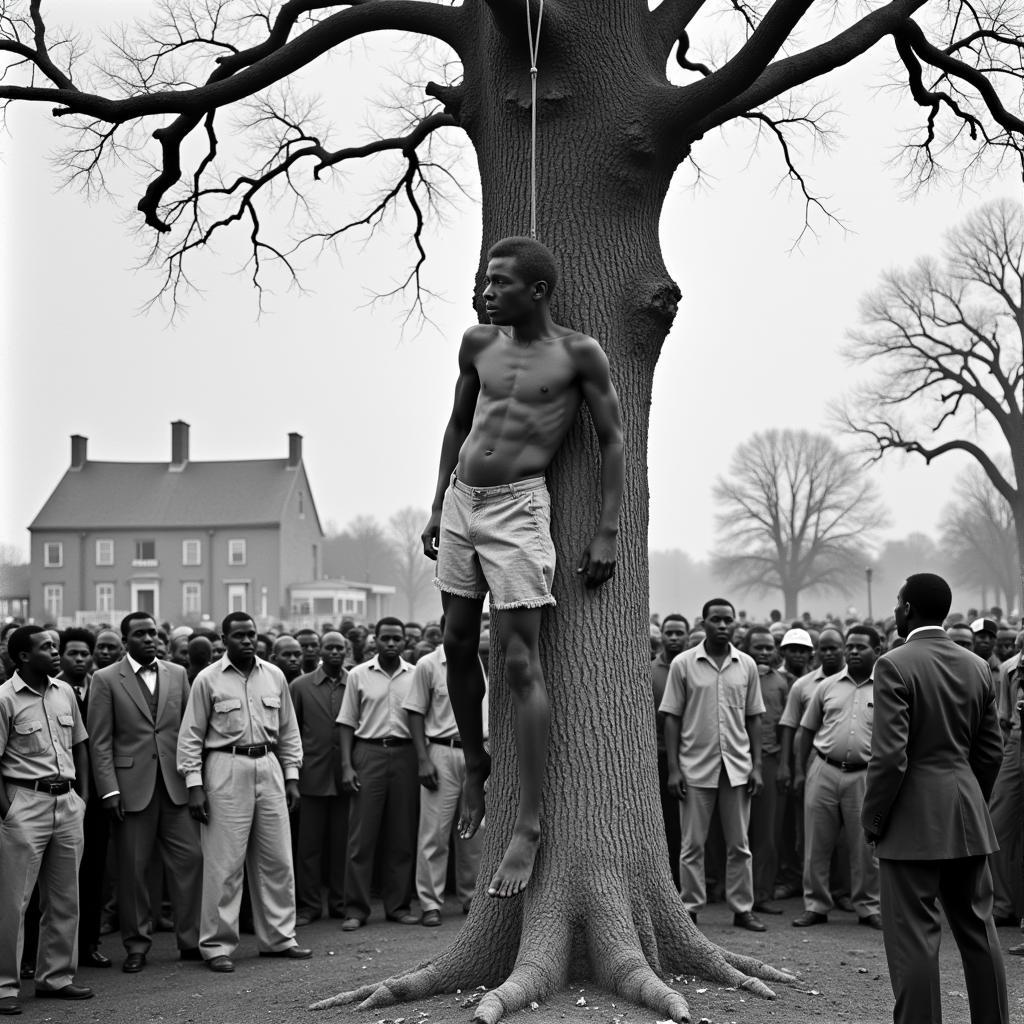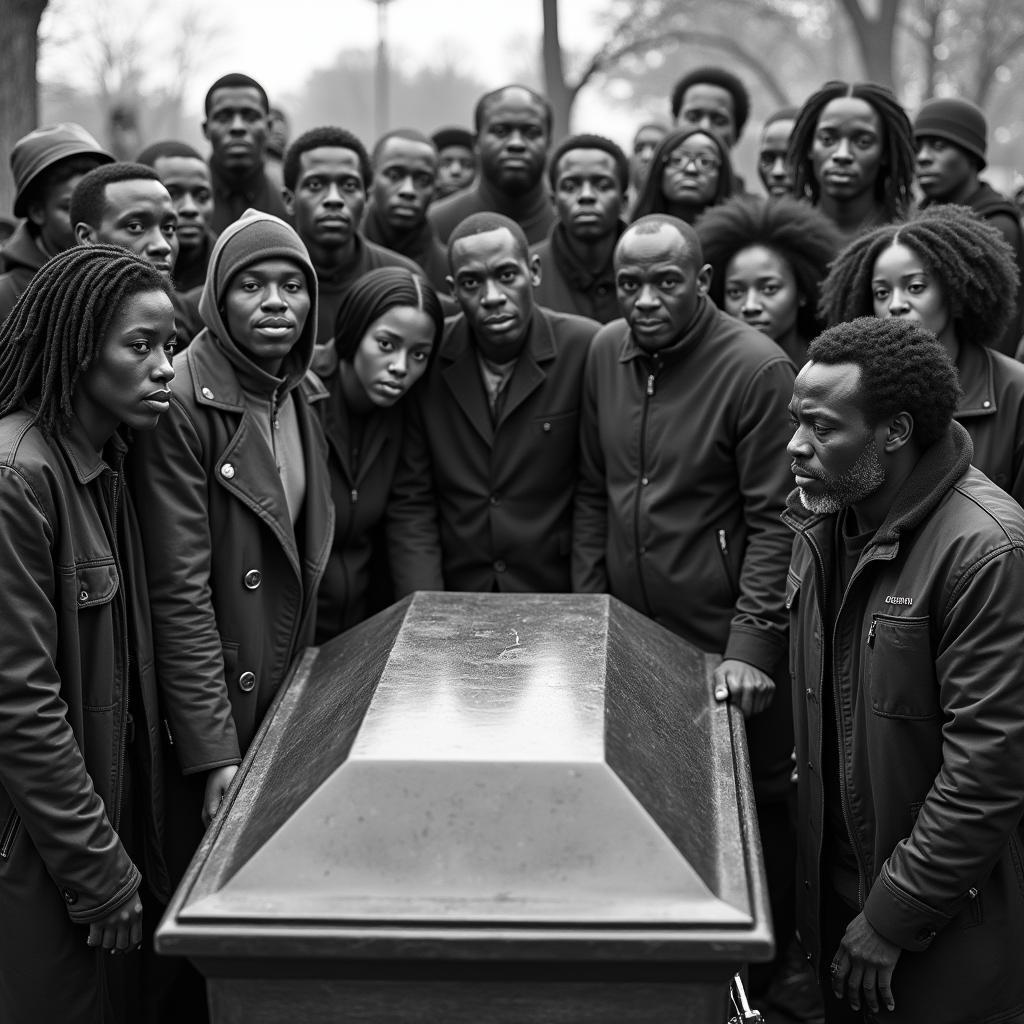The Dark History of African American Lynching
African American Lynching represents a horrific chapter in American history. Between the late 19th and mid-20th centuries, thousands of Black Americans were brutally murdered by mobs, often without trial or due process. This article delves into the history, causes, and lasting impact of this racial terrorism.
Racial terror lynchings, as they are sometimes called, weren’t random acts of violence. They were systematic tools of oppression designed to maintain white supremacy and control Black communities. False accusations, often based on fabricated stories of interracial relationships or minor offenses, were used as justification for these barbaric acts. The sheer brutality of these lynchings, which often involved torture, mutilation, and public spectacle, aimed to terrorize and subjugate the entire Black population.
The Underlying Causes of Lynching
Several factors contributed to the prevalence of lynching in the United States. Reconstruction, the period following the Civil War, saw a rise in Black political and economic power, which threatened the existing white power structure. Economic downturns and social anxieties often fueled racial tensions, leading to increased violence against African Americans. White supremacy ideology, deeply ingrained in American society, provided a rationale for the dehumanization and persecution of Black people.
The Jim Crow laws, enacted after Reconstruction, further marginalized African Americans and created a legal framework that allowed for widespread discrimination and violence. These laws enforced segregation in all aspects of life, from schools and hospitals to public transportation and restrooms. This system of racial apartheid fostered an environment where Black lives were devalued and violence against them was often met with impunity.
 African American Lynching Victim: A haunting photo depicting the grim reality of racial terror in America.
African American Lynching Victim: A haunting photo depicting the grim reality of racial terror in America.
The Impact of Lynching on African American Communities
The impact of lynching on African American communities was devastating and far-reaching. The constant threat of violence created a climate of fear and insecurity. Families lived in terror, knowing that any perceived slight or transgression could lead to the brutal murder of a loved one. This trauma was passed down through generations, leaving a lasting scar on the collective psyche of Black Americans.
Lynching also had a profound economic impact. Black businesses were targeted and destroyed, and Black farmers were often driven off their land. The threat of violence limited economic opportunities and contributed to the cycle of poverty that plagued many Black communities.
The psychological toll of lynching cannot be overstated. The constant fear and trauma led to widespread mental health issues, including anxiety, depression, and PTSD. The internalized racism that resulted from this systematic oppression further compounded the psychological damage.
 African American Community Mourning a Lynching: A scene of grief and despair as a community grapples with the loss of a loved one to racial violence.
African American Community Mourning a Lynching: A scene of grief and despair as a community grapples with the loss of a loved one to racial violence.
The Fight Against Lynching
Despite the terror and oppression they faced, African Americans courageously resisted lynching and fought for justice. Activists like Ida B. Wells-Barnett tirelessly documented and exposed the horrors of lynching to the world, challenging the prevailing narratives that justified these acts. Organizations like the NAACP launched campaigns to raise awareness and advocate for anti-lynching legislation. african american women protest played a crucial role in these movements.
The struggle against lynching was a long and arduous one, marked by setbacks and disappointments. Despite numerous attempts, federal anti-lynching legislation was repeatedly blocked by Southern senators. However, the tireless efforts of activists and organizations eventually brought about a shift in public opinion, paving the way for future civil rights gains. It is important to acknowledge the historical context and the connections between past injustices and the ongoing struggles for racial equality today. For instance, understanding this era helps put into perspective some of the african american history 1900s. Even children were not spared from the horrific racism of this time, as seen in cases like the african kids alligator bait.
Remembering and Learning from the Past
It is crucial to remember and learn from the dark history of African American lynching. By understanding the causes and consequences of this racial terrorism, we can work to dismantle the systems of oppression that continue to plague our society. Acknowledging this painful past is essential for building a more just and equitable future. We can also gain valuable insights into the social and cultural landscape of the time by exploring the works of african american female authors who documented these experiences. Cases of african americam man lynched serve as stark reminders of this era’s brutality.
Conclusion
African American lynching remains a stain on American history, a testament to the brutal legacy of racism and white supremacy. By confronting this difficult past, we can honor the victims of these atrocities and work to create a future free from racial violence and injustice. Remembering and understanding the history of African American lynching is crucial for creating a more just and equitable society.
FAQ
-
What was the primary motivation behind African American lynchings?
- Maintaining white supremacy and controlling Black communities.
-
How did Jim Crow laws contribute to the prevalence of lynching?
- They created a legal framework for discrimination and violence against African Americans.
-
Who was Ida B. Wells-Barnett, and what was her role in the fight against lynching?
- A journalist and activist who documented and exposed the horrors of lynching.
-
What was the lasting impact of lynching on African American communities?
- Generational trauma, economic hardship, and widespread psychological issues.
-
Why is it important to remember and learn from the history of African American lynching?
- To dismantle systems of oppression and build a more just and equitable future.
Need help? Contact us 24/7: Phone: +255768904061, Email: [email protected], or visit us at Mbarali DC Mawindi, Kangaga, Tanzania.
